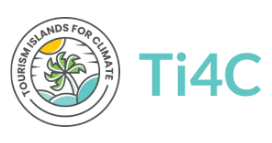Ti4C Carbon Offset Project
Ti4C-WxC initiative to reduce the CH4 emissions in BALI with the help of the Tourists and Tourism industry

Founder and Chairman of Ti4C
"Rice production in Bali now fuels 121,000 tonnes of methane (CH4) per year, equivalent to 3,4 Million tonnes of CO2" [1]
By participating in the Ti4C program, tourists can pay less for their stay in Bali while helping Balinese farmers to reduce their methane (CH4) emissions, lift rice farmers out of poverty, and keep enjoying Bali responsibly. Acting rapidly to deploy readily available methane mitigation measures by sector can immediately slow global warming. [2]
CH4 emissions from wetland rice fields represents globally around 15–20% of the annual anthropogenic CH4 emissions. [3] In Bali, rice paddy fields emit in CH4 the equivalent of the total CO2 emitted by inbound tourists yearly. However mitigating the CH4 emission in Bali is possible by supporting rice farmers to use new technology:
The alternate wetting and drying technology (AWD) is credited by IPCC (2006) with reducing CH4 emissions by an average of 48% compared to continuous flooding. During the COP 28 in Dubai in 2023, Prof. Steve Lansing of the Santa Fe Institute was invited to present his research and pilot tests conducted in the Subak Bena in Bali. Prof Lansing showed that using an improved technology specific to the Bali conditions CH4 emissions could be reduced by 60 to 70% or more while increasing the yield by 22%, reducing the quantity of fertilizer, reducing the water consumption by up to 30% and protecting the corals reef in some areas.
The technology developed by Prof. Steve Lansing, John Miller of the Santa Fe Institute in USA and Prof. Wayan Alit Artha Wiguna from Balai Pengkajian Teknologi Pertanian Bali, as previously unveiled by Prof. Stephen Lansing at the COP 28 in Dubai (Dec 2023) is now available through their Somya Pertiwi and World-x-Change organizations, in association with Ti4C. The initial phase of the project is being implemented in the UNESCO World Heritage area of Tabanan, Bali.
CO2 emissions from inbound tourists in Bali
3.5 million
tonnes
per year
Existing CO2e emissions from paddy fields in Bali
3.4 million
tonnes
per year
[1] A Concept Note Rev. 1.2 with the International Rice Research Institute (IRRI) and the Global Alliance for a Sustainable Planet (GASP) by Prof. Stephen Lansing, Prof. John Miller, Wayan Alit Artha Wiguna PhD, Jeff Kersey MSc with support from Bas Bouman PhD and Bjoern Ole Sander PhD, 5 March 2024.
[2]Ilissa B. Ocko et al., 2021. “Environ. Res. Lett. 16 054042.”
[3]Singh, N.K., Patel, D.B., Khalekar, G.D., 2018. “Methanogenesis and Methane Emission in Rice/Paddy Fields,” in Lichtfouse, E. (Ed.), Sustainable Agriculture Reviews 33. Springer, Cham. https://doi.org/10.1007/978-3-319-99076-7_5
Project Highlight
Applying a higher methodology developed by Prof. Stephen Lansing, Prof. John Miller and Prof. Wayan Alit Artha Wiguna from Somya Pertiwi agricultural NGO to reduce the approx. 3.4 Million tons of CO2e emitted every year by rice paddies in Bali, while providing direct benefits to all farmers who participate.
Carbon Reduction
High Standard
Far superior to the existing one in the industry with much better measurements and monitoring technologies
Additional Benefit
The technology will also increase 22% additional rice production with up to 30% less water usage and offer additional corals protection
Support this climate protection project in Bali and save money while you are enjoying the island
Wonderful discount from participating vendors is just one tap away!
